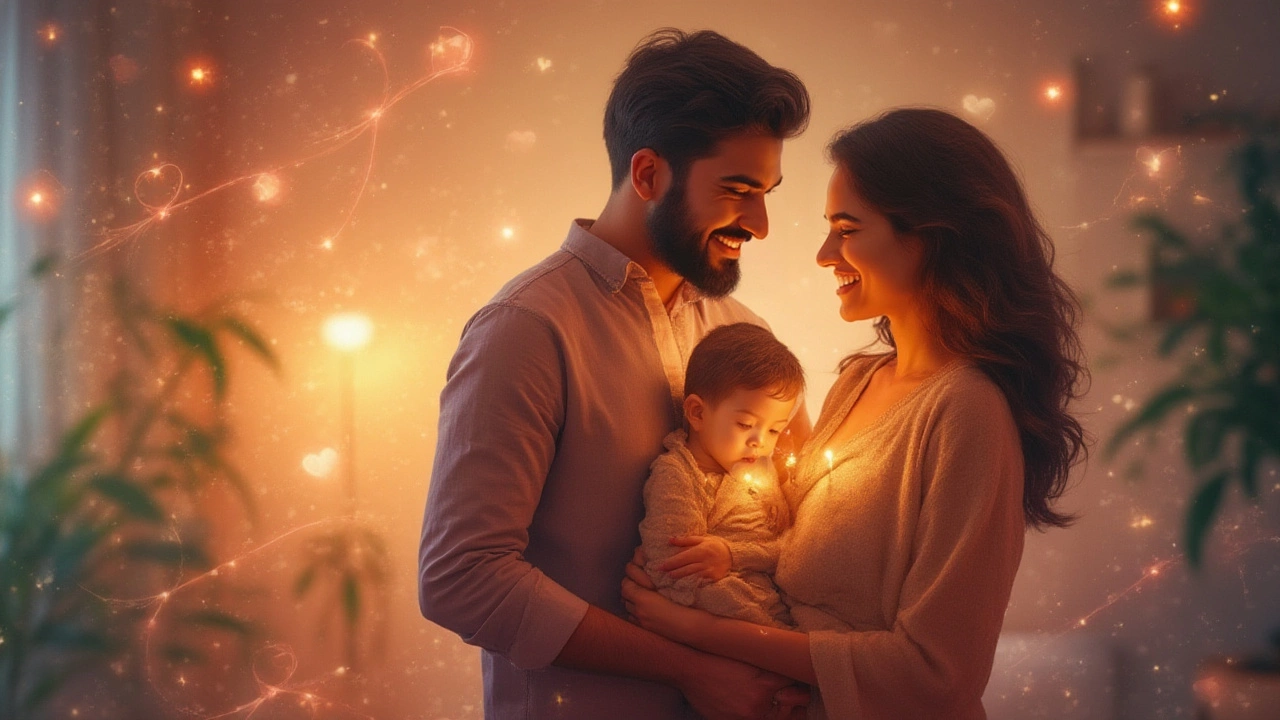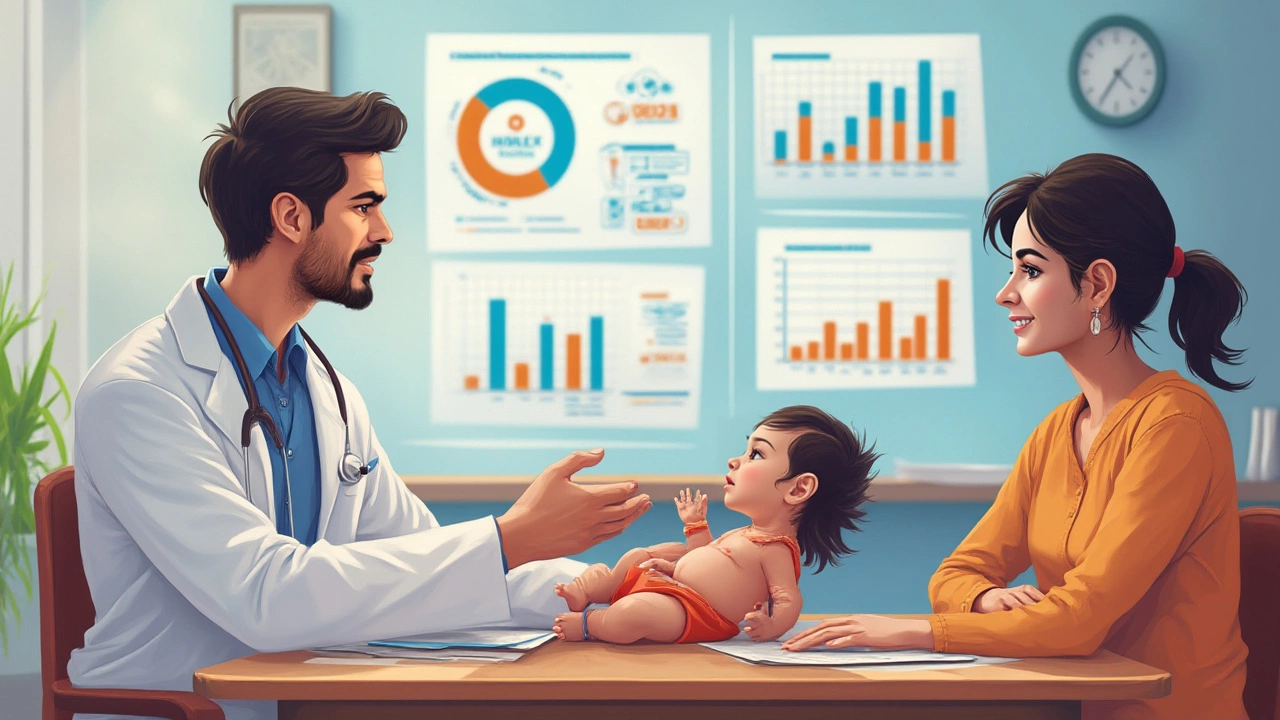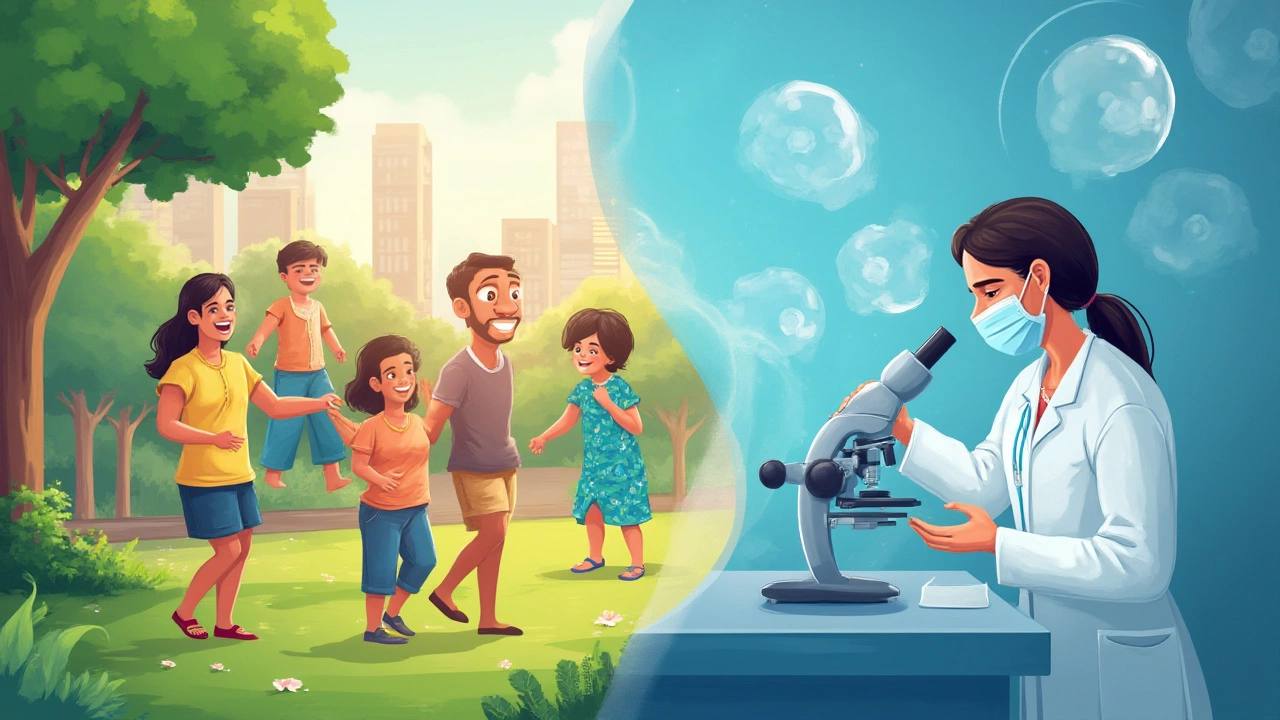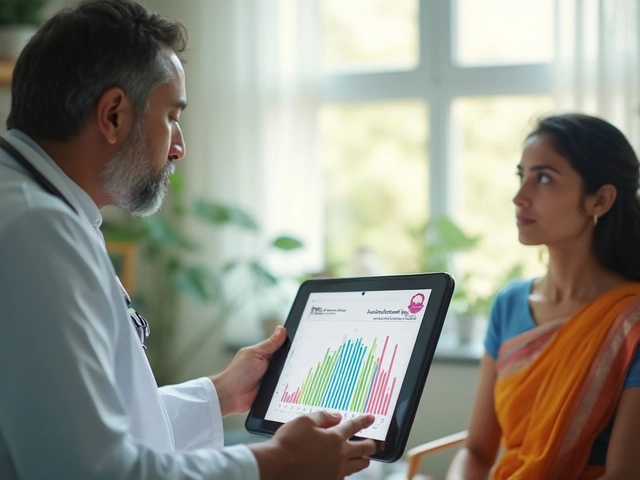
Picture this: a giggling toddler building sandcastles on the beach. You’d never know if that child came into the world through IVF or the old-fashioned way. Still, the internet is stacked with wild theories about IVF babies: Are they as healthy? Do they face long-term risks? As millions of families look to IVF to grow their families, this question is nudging at the back of every parent’s mind. Some nights, it even keeps them up. It’s clear: people want straightforward answers—real numbers, scientific proof, and honest talk about the health of children born through assisted reproduction.
What Research Really Says About IVF Babies' Health
Forget the horror stories. Real science offers a much calmer take. Over 12 million IVF babies have been born globally since the late 1970s, and researchers have been tracking their health for decades. Most studies, including a 2023 review from The Lancet, have found that IVF babies are just as likely to be healthy as children conceived naturally. The rates of congenital (birth) defects are only slightly higher for IVF—think 4% with IVF compared to 3% for naturally conceived babies—but that 1% difference isn’t as scary as it sounds. A big chunk of that difference can be chalked up to the fact that couples turning to IVF often have higher average maternal and paternal ages, or underlying health challenges, which have their own risks.
Most IVF kids hit their milestones right on time. Studies looking at language, movement, and social skills found virtually no difference between IVF and naturally conceived kids by age five. A big Australian database tracked 80,000 children for ten years and saw no spike in serious illnesses or hospitalizations linked with IVF. UK research in 2022 echoed that: children born after IVF were doing well by school age, and any small differences usually faded away as they grew.
Sleep, mood, and even IQ check out fine, too. The biggest known twin study showed that IVF twins and singletons fared about the same as their non-IVF peers. If your neighbor’s kid seems smart and kind and came from IVF, that’s not a fluke.
Risks You Should Actually Care About
Here’s the real story: yes, there are a few risks linked to IVF, but they’re not the monsters some headlines claim. For starters, IVF increases the chance of multiple births—twins or triplets—which are connected with preterm delivery and lower birth weight. However, most modern clinics only transfer one embryo at a time, which has slashed twin rates in the past ten years. In 2012, nearly 40% of US IVF births were twins or higher-order multiples. By 2023, that dropped to around 10%.
Children born via IVF are a bit more likely to be born early or small, even with a single baby, but we’re talking minor differences in weight (about 130-160 grams less) and a slightly higher chance of preterm delivery (about 10% for IVF compared to 6% for natural conception). These numbers sound big, but most kids catch up quickly. Major disability or health conditions? They remain rare in both groups.
What about scary-sounding stuff, like autism, cancer, or developmental problems? Large reviews from Scandinavia (up to 2.5 million births) show IVF doesn’t add extra risk for autism or childhood cancers. Epigenetic issues (relating to how genes are switched on or off during early embryo development) do exist, but the risk is minute—a handful of extra cases per 100,000 births, according to top-notch studies in Denmark and the US.
The bottom line: the vast majority of IVF babies go home healthy. If something is different, it's usually a small or manageable variation. We’re talking about tiny, manageable bumps—not the dramatic risks some alarmist sites love to shout about.
| Health Outcome | IVF Babies | Naturally Conceived Babies |
|---|---|---|
| Birth defects (%) | 4.0 | 3.0 |
| Premature birth (%) | 10 | 6 |
| Average birth weight (grams) | 3,230 | 3,370 |
| Autism rate (%) | 1.7 | 1.6 |

Where the Myths Come From
It’s funny how myths about IVF babies stick like chewing gum under a desk. A lot of this comes from stories back when IVF was brand new—back in the days of dial-up internet, everything about test-tube babies sounded ‘unnatural’ and even a bit alarming. The first IVF baby, Louise Brown, is now nearly 50 and perfectly healthy, but those early doubts took root and spread fast.
Other myths are fueled by outdated information. Multiple embryo transfers used to be common, leading to more twins and complications. Early rounds of IVF involved higher hormone doses and riskier lab processes. Education and improving technology have changed all that. Modern IVF is safer and more precise, with tight controls on embryo handling, so the old ‘Frankenstein baby’ fears are just not relevant anymore.
Another source? The self-reinforcing worry that people are drawn to IVF clinics due to health issues that can get passed down. But that risk is tied more to parents’ underlying health, not to the IVF science itself. If you hear stories of babies born unhealthy after IVF, look for the full context—was mum 44? Was there a family history? Did the couple have another condition in play?
Pop culture doesn’t help either. Films and tabloid headlines love a juicy ‘designer baby’ story, warping public opinion further. When you see stats and studies—check if they’re recent, and if they looked at huge numbers of births. Data from 30 years ago tells a different story to today’s reality.
Tangible Tips for IVF Parents Worried About Baby's Health
Let’s face it, statistics only go so far when you’re staring into the incubator or scrolling newborn checklists at 2 a.m. Want to give your IVF baby the best shot at thriving? Focus on the same basics as any parent but pay attention to a couple of specifics:
- Choose a reputable clinic. Success rates, lab standards, and embryo transfer policies make a difference. Single embryo transfer often means safer, healthier deliveries.
- Don’t skip preconception testing. Screen for things like chromosomal disorders before embryo transfer. Knowledge here can nudge outcomes in your favor.
- Keep pregnancy care extra tight. Regular scans help spot any growth or placental issues early, especially if you’re an older mum.
- Aim for healthy lifestyle choices before and during pregnancy—diet, sleep, avoiding tobacco and alcohol. These things carry more weight than the IVF process itself.
- After birth, track health milestones, but don’t panic over every small deviation. Remember, small birthweight differences usually vanish by school age. Follow up with pediatric visits as you would for any baby.
- If twins or even triplets arrive, lean on specialist care. Early support can manage feeding, weight, and growth better.
IVF babies don’t need extra interventions or specialized diets unless your pediatrician advises. Celebrate those rolling-over moments, first giggles, and wild toddler escapades just the same as any parent would.

Decoding the Newest Data—And What the Future Holds
Here’s a twist: some fresh evidence says IVF might actually help spot and avoid rare genetic problems. Pre-implantation genetic testing (PGT) lets clinics screen embryos for specific gene glitches before transfer. That means fewer inherited issues slipping through. As the technology matures, the rates of inherited diseases in IVF kids could actually dip below the general average.
Researchers are also delving into minor differences observed at the DNA level—what they call methylation patterns—but these rarely lead to “real-world” health problems. If anything, these insights will make IVF even safer over time. Big studies running out of the Netherlands and Australia are now starting to track IVF children into their 20s and 30s, and early reports suggest these young adults are pretty much indistinguishable from those born without fertility help.
Another trend: with fertility challenges affecting one in six couples worldwide, IVF births are on the rise. In places like New Zealand, Australia, and the UK, IVF kids are part of the mainstream, seen in classrooms, on playgrounds, and filling up sports teams. Cultural acceptance is growing, and future families will likely face even fewer old-school worries or taboos.
So, are IVF babies healthy? The answer—backed by decades of data and the lived experience of millions—is yes. The risks, while real, are small and shrinking with each advance in science. If that helps you sleep a little better tonight—or helps you look at your baby with fresh eyes—then all those research hours were worth it.






